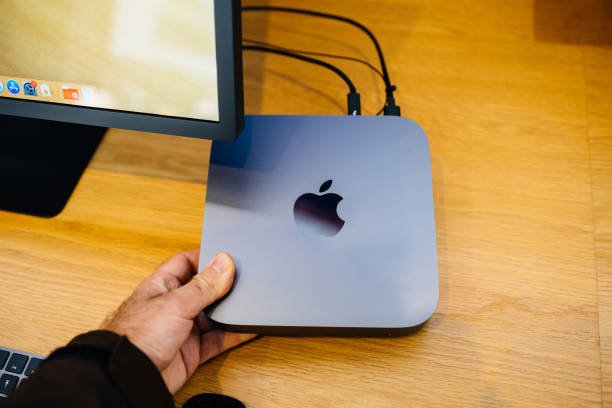I’m sure many are still skeptical as to how practical a mini PC is. Many tech enthusiasts have once questioned how mini PCs are able to hold up against computer or laptops. That may be true back then but with the advance in technology, some mini PCs are even more powerful than computers!
What is a Mini PC? – Things you should know before purchasing
Before we move on, let’s learn a little about the background of mini PCs and how they came about!
A brief history of mini computers
A former researcher at the MIT Lincoln laboratory named Kenneth Olsen established the Digital Equipment Corporation (DEC) in August 1957.
DEC announced the PDP-8, which used a 12-bit word length and cost $18,000 in August 1965. It is a small, inexpensive and suitable for a wide range of system applications, and thus it became the first minicomputer.
This then attracted many firms such as Varian Data Machines, Data General (DG), Hewlett-Packard (HP) and Interdata to join the new minicomputer market.
First-ever minicomputer: PDP-8
Ref: Science Museum Group Collection
Now that we have a brief understanding of how minicomputers came about, let’s get right into our main topic today!
What will be covered:
Overview of Mini PC
Things to take note before purchasing a Mini PC
The minimum requirement for your Mini PC based on your needs
Mini PC recommendation
Mini PC Applications
Comparison between Mini PC and computer
Overview of Mini PC
What is a Mini PC?
Mini PCs, also known as minicomputers or mid-range computers, are a variant of computers that possesses most of the features and capabilities of a large computer but is smaller in physical size.
How do mini PC works?
Alike to a computer, a mini PC has a central processing unit (CPU) and memory, which means a mini PC basically operates the same way as a computer does. Where the CPU would execute instruction by fetching it from the memory, using ALU to perform an operation, and then storing the result to memory.
Parts and features of Mini PC
A mini PC generally have the same parts as a computer, but there are a few differences, let’s look at what’s in a mini PC:
Processor: Performs operation based on data. Mini PCs generally uses (ARM)-based processors as it is small and energy-efficient.
Memory: Stores data. There are two types of memory: Read-only memory (ROM) and Random-access memory (RAM). ROM cannot be altered, while RAM can be repurposed.
Storage: Mini PC uses Flash memory to hold information.
Operating System: Platform to run other programs.
Computer ports: Allows connection with other devices such as a monitor, keyboards etc. Depending on the mini PC, it may also have USB or HDMI, RCA-video out, audio jack.
What’s missing in a mini PC:
Cooling System: This may pose to be an issue since computing generates heat, but you can always add a fan to your mini PC if that’s your concern.
Real-Time Clock (RTC): RTC is a timekeeping device that keeps going even after you shut down. However, a mini PC does not have a battery, and since RTC relies on the power from a battery, it is not included due to space constrain as well.
Physical interface: There’s no display, keyboards or mouse and thus this is something you have to add on to your purchase, but some mini PCs do support Bluetooth. If not, you can always connect using the USB ports.
Variants of mini PC
Barebone
Barebone computers are usually cheaper, but they do not come with hard drive and RAM. A barebone usually only consists of the case, the motherboard and the processor. This is definitely popular amongst tinkers who enjoy customizing since they’re required to assemble it.
As its name suggests, a ready-to-go mini pc is perfect for beginners or those who just want to use it as it is. Though usually pricier, it has all your necessary features in one. Which makes it really convenient!
Advantages of Mini PC
Speaking of advantages, there are a few obvious reasons why you would purchase a mini PC over a laptop or desktop:
Size: This shouldn’t come as a surprise when the name “mini” already tells you that. Because of its tiny body, it is portable, light and could be tucked away easily.
Cost: When comparing the cost of a mini pc with desktop or laptops, it is definitely much more cost-effective.
Versatile: You’re able to change the parts inside a mini PC anytime, you can even choose which monitor you’d want to use, be it your TV or computer monitor.
Energy Consumption: Mini PCs are known for their low energy consumption which would require less power.

